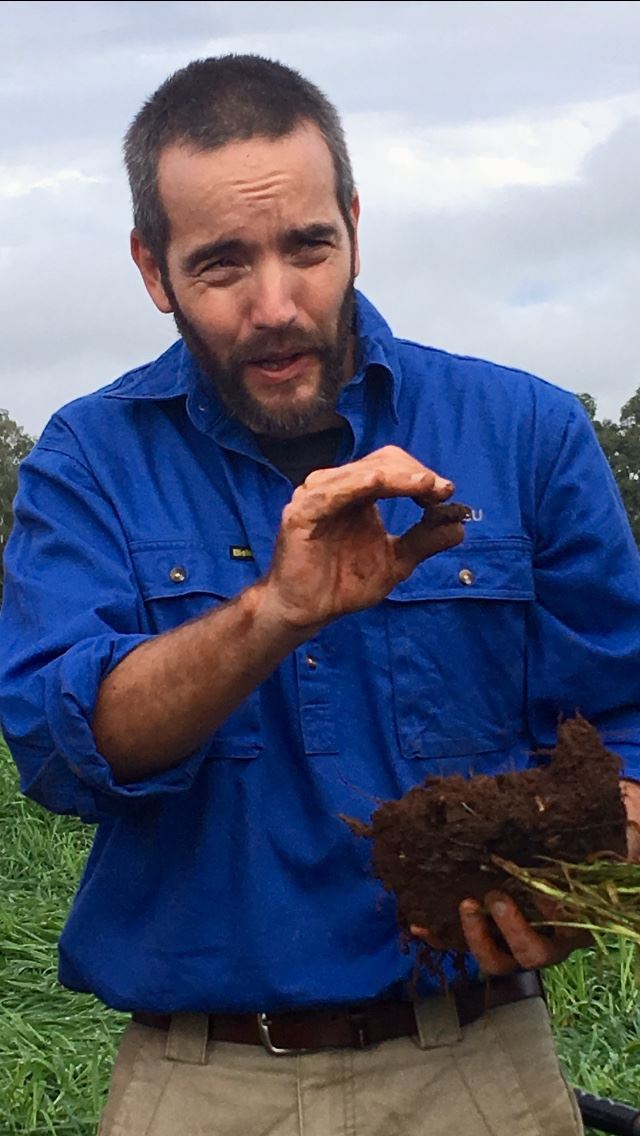Despite good rainfall in many areas since autumn, some patches of soil are still bare. Dr Jason Condon from Charles Sturt University explained how soil acidity can be a factor driving poor ground cover in pastures. Jennie Curtis, a small farmer from the Capital Region, showed us some of the bare patches at her place.
The webinar recorded on Saturday 4 July 2020 will help you to develop an understanding of soil acidity including the causes and influence of soil acidity on plants and the landscape. Simple methods to diagnose soil acidity are explained. Addressing soil acidity may be a useful step in filling the bare patches on your land.

Watch the webinar recording
Key messages:
1. Soil pH is a measure of hydrogen ions in the soil. The most commonly used pH scale ranges from 0 to 14. A pH of 7 is neutral. As the number goes down from 7 (ie. 6, 5, 4...) the soil acidity increases while values above 7 are alkaline. In the Capital Region many soils are acidic. Soil pH can be measured in the field using a test kit or by sending a sample to a laboratory for more accurate results. The pH (CaCl2) test is the more accurate of the two pH tests, as it reflects what the plant experiences in the soil. The values of pH (CaCl2) are normally lower than pH(w) by 0.5 to 0.9. A simple pH soil testing kit from the rural shop measures pH in water.
NSW DPI Understanding Soil pH
NSW DPI Soil Acidity and Liming
2. Agriculture involves removing plant material either by harvesting plants or grazing plants and this process acidifies soils. To counteract this you need to get to know what the problems are for your soils.
3. If your soil is pH 5 or lower, the percentage of available Aluminum is more likely to be at levels that are toxic to plants. High Aluminium reduces root growth and stops cellular growth at the root tip - the roots will be short and stumpy. Where % Aluminium is high, Magnesium and Calcium are leeched away from the root zone.
4. Soil acidity is not uniform down through a soil profile so the pH results from a 0-10cm soil test won't give you the full story. Often the pH at the surface where plants are growing is higher and then the soil is more acidic further down. A dig stick can be used with pH indicator powder from a pH test kit to show the range of acidity in your soil profile (see photo below where the pH in water is being tested).

5. When you get a soil test done, only pay for what you need. A simple soil test should include soil pH, electrical conductivity, available phosphorus, cation exchange capacity, % Aluminium and organic carbon.
6. Lime is akaline and can be used to adjust soil pH. It is not an annual fertiliser. Soil tests should be used to identify the need for lime and the effects of applying lime can take a long time to be seen. In acidic soils, research suggests that lime moves down through the soil profile best when a target pH of 5.5 is used. This often requires a high initial application rate followed by small top ups every few years for maintenance of a target pH of 5.5. This approach allows lime to be applied on the surface or in relatively shallow seed furrows and to move down through the soil profile without cultivation of the soil. Monitoring your soil is essential for finding our what works on your farm.
7. Plain lime is best for surface application. Prilled lime can have a good effect when applied in seed rows or riplines but generally is not as effective as regular lime when applied on the surface.
This project is supported by South East Local Land Services, through funding from the Australian Government’s National Landcare Program.